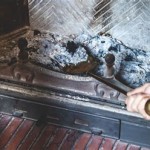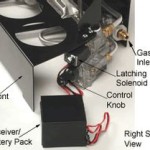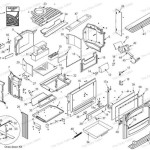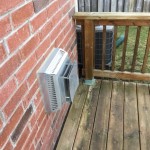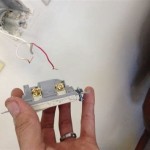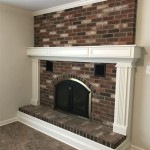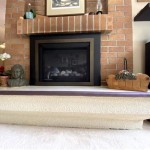How Much Is a Fireplace Damper?
A fireplace damper is a crucial component of a functional and safe fireplace system. It acts as a gatekeeper, controlling airflow up the chimney when the fireplace is in use and preventing drafts and heat loss when it is not. The cost of a fireplace damper can vary significantly depending on several factors, including the type of damper, the material it’s made from, whether installation is included, and local market rates.
Understanding the factors that influence pricing is essential for homeowners looking to replace a faulty damper or install one in a new fireplace. Furthermore, recognizing the benefits a properly functioning damper provides, such as improved energy efficiency and safety, helps justify the investment.
Understanding Different Types of Fireplace Dampers and Their Costs
The type of fireplace damper plays a significant role in determining its price. The two primary types are throat dampers and top-sealing dampers. Throat dampers are the traditional type, located just above the firebox within the chimney throat. Top-sealing dampers are a newer, more energy-efficient alternative, installed at the top of the chimney.
Throat dampers are generally less expensive than top-sealing dampers. A basic throat damper might range in price from $50 to $150, depending on the size and material. These dampers typically consist of a metal plate that pivots to open and close the flue. Their simplicity contributes to their lower cost. However, they are also known to be less effective at preventing air leakage than top-sealing dampers.
Top-sealing dampers, also sometimes referred to as chimney top dampers, offer a tighter seal and better insulation. They are essentially a lid that clamps onto the top of the chimney flue. This significantly reduces heat loss when the fireplace is not in use. Due to their more complex design and superior performance, top-sealing dampers typically cost between $150 and $400. This price range can vary depending on the material, size, and brand. Some models offer additional features, like stainless steel construction or remote control operation, further impacting the overall cost.
Factors Influencing the Overall Cost of a Fireplace Damper Replacement
Beyond the damper type, other factors influence the final cost of a fireplace damper replacement. These include the material of the damper, the size of the chimney flue, and the cost of labor if professional installation is required. The material the damper is made from affects its durability and resistance to corrosion. Common materials include cast iron, galvanized steel, and stainless steel. Stainless steel is generally the most durable and expensive, while galvanized steel is a more affordable option that may not last as long.
The size of the chimney flue determines the size of the damper required. Larger flues necessitate larger dampers, which naturally cost more. It's crucial to accurately measure the flue dimensions before purchasing a replacement damper to ensure a proper fit and optimal performance. Incorrectly sized dampers can lead to inefficient operation and potential safety hazards.
Labor costs for professional installation can significantly add to the overall expense. The complexity of the installation greatly impacts the labor cost. Replacing a throat damper may be a relatively straightforward task for a skilled homeowner, potentially eliminating the need for professional help. However, installing a top-sealing damper often requires specialized tools and experience, especially if the chimney is tall or difficult to access. The cost of professional installation can range from $100 to $500 or more, depending on the complexity of the job and the local labor rates.
Assessing the Long-Term Value and Benefits of a Properly Functioning Damper
While the initial cost of a fireplace damper might seem significant, it is important to consider the long-term value and benefits it provides. A properly functioning damper contributes to improved energy efficiency, reduced heating and cooling costs, and enhanced safety. A leaky or damaged damper can allow significant amounts of heated or cooled air to escape through the chimney, leading to higher energy bills. A top-sealing damper, in particular, can drastically reduce air leakage and prevent drafts, resulting in substantial energy savings over time.
Furthermore, a functional damper prevents animals and debris from entering the chimney and, subsequently, the home. This can prevent costly repairs and maintenance issues, such as dealing with bird nests or animal infestations. A damaged or missing damper also poses a safety risk, allowing smoke and harmful gases to enter the home when the fireplace is in use. A properly installed and maintained damper ensures that smoke and combustion byproducts are safely vented up the chimney, protecting the occupants of the home from carbon monoxide poisoning and other health hazards.
Finally, a well-maintained chimney system, including a functional damper, increases the lifespan of the chimney itself. By preventing moisture and debris from entering the chimney, the damper helps protect the masonry from deterioration and prevents costly repairs down the line. Therefore, investing in a quality fireplace damper and ensuring its proper installation and maintenance represents a wise investment in the long-term health and safety of the home.

How To Open A Chimney Damper Traditional Fireplace Pros

What Is A Chimney Damper Full Service

How To Use A Fireplace Damper The Right Way

When To Close My Fireplace Damper We Love Fire

The Purpose Of Your Chimney Damper Asheville Nc Environmental

How Do Fireplace Dampers Work Zoro Com

Fireplace Damper Repair Full Service Chimney Kansas City

Everything You Need To Know About Chimney Dampers All Pro Service

Save On Utility Costs Energy Top Plus Saving Damper Replacements

When Should You Close The Damper On A Fireplace Tips

